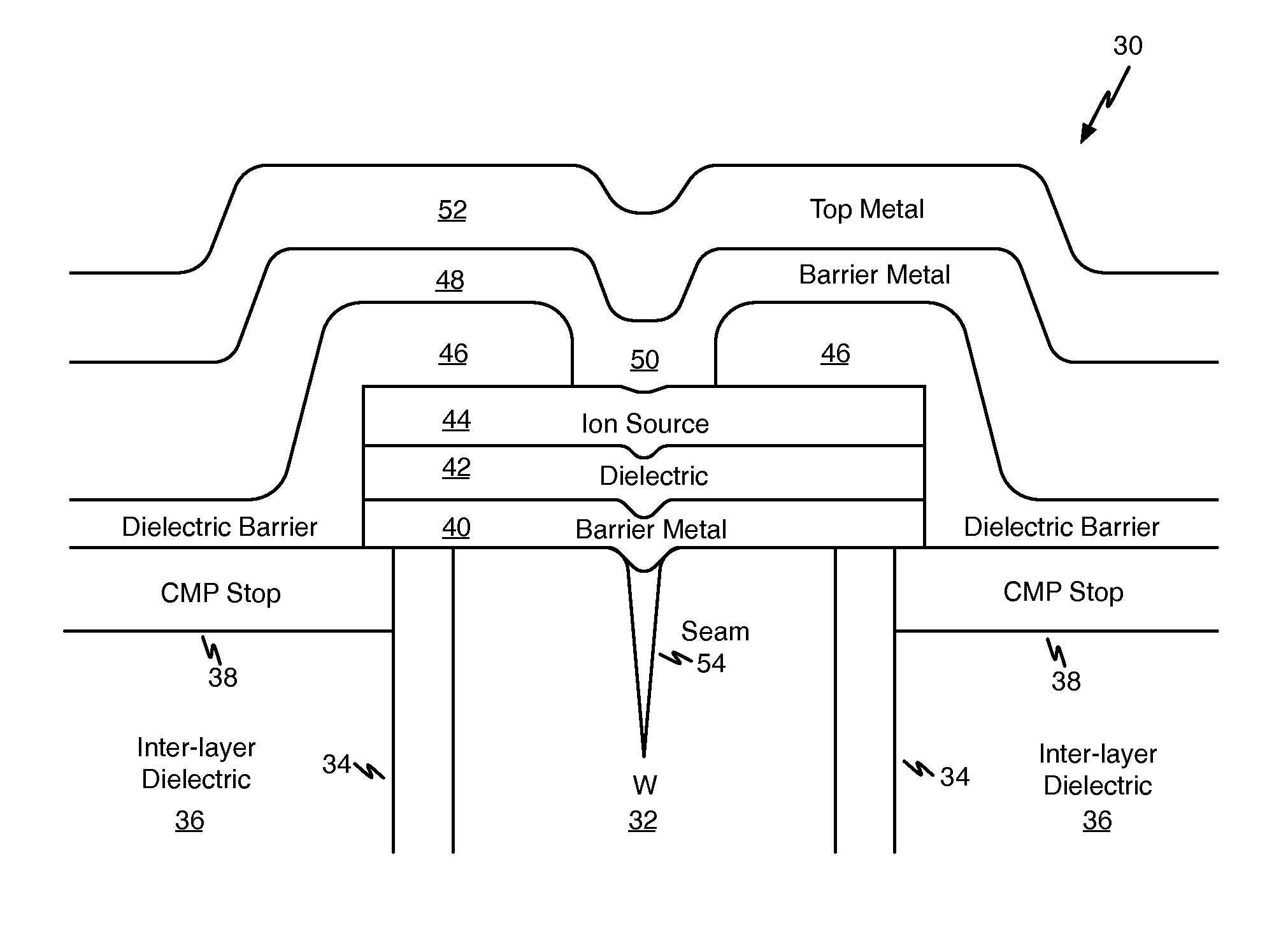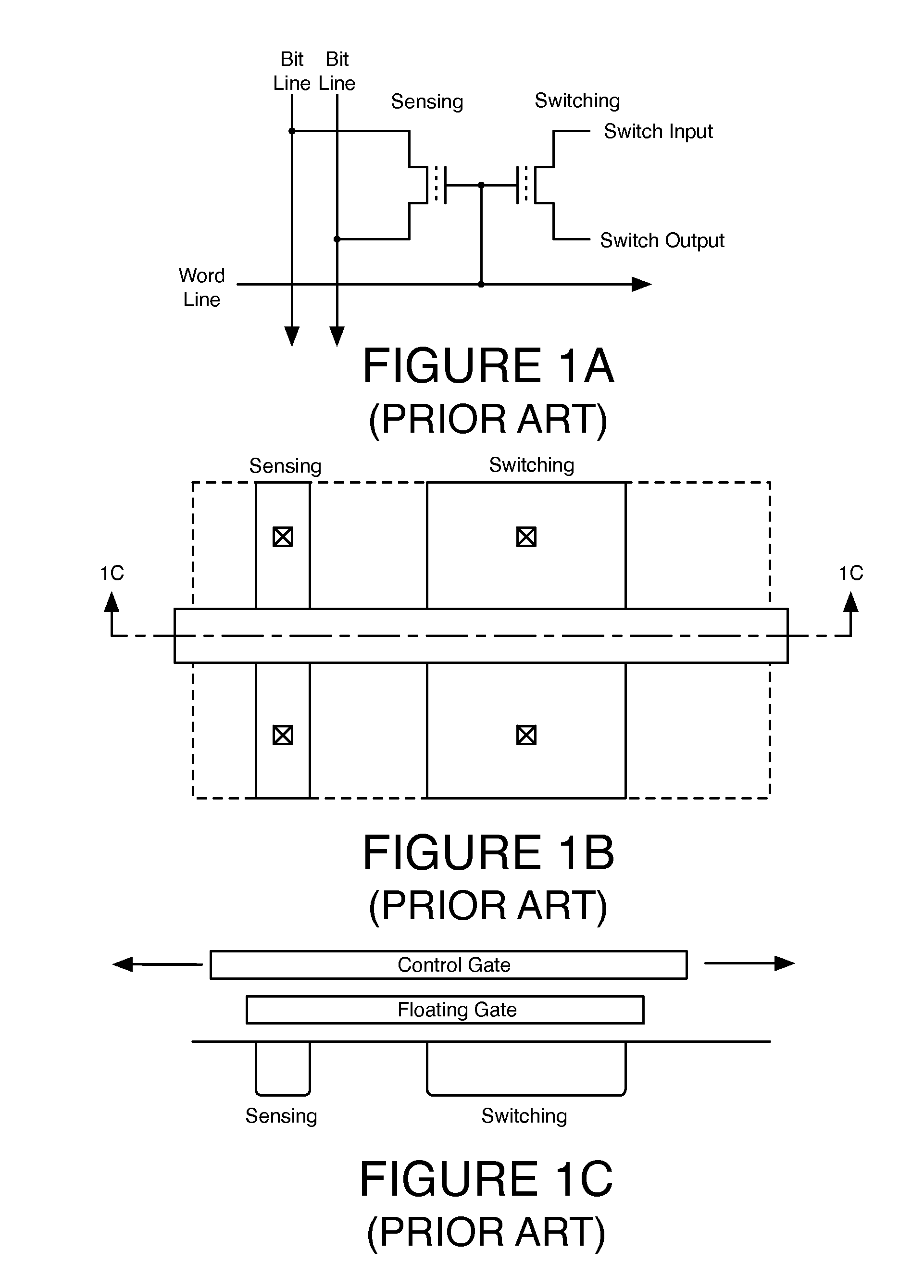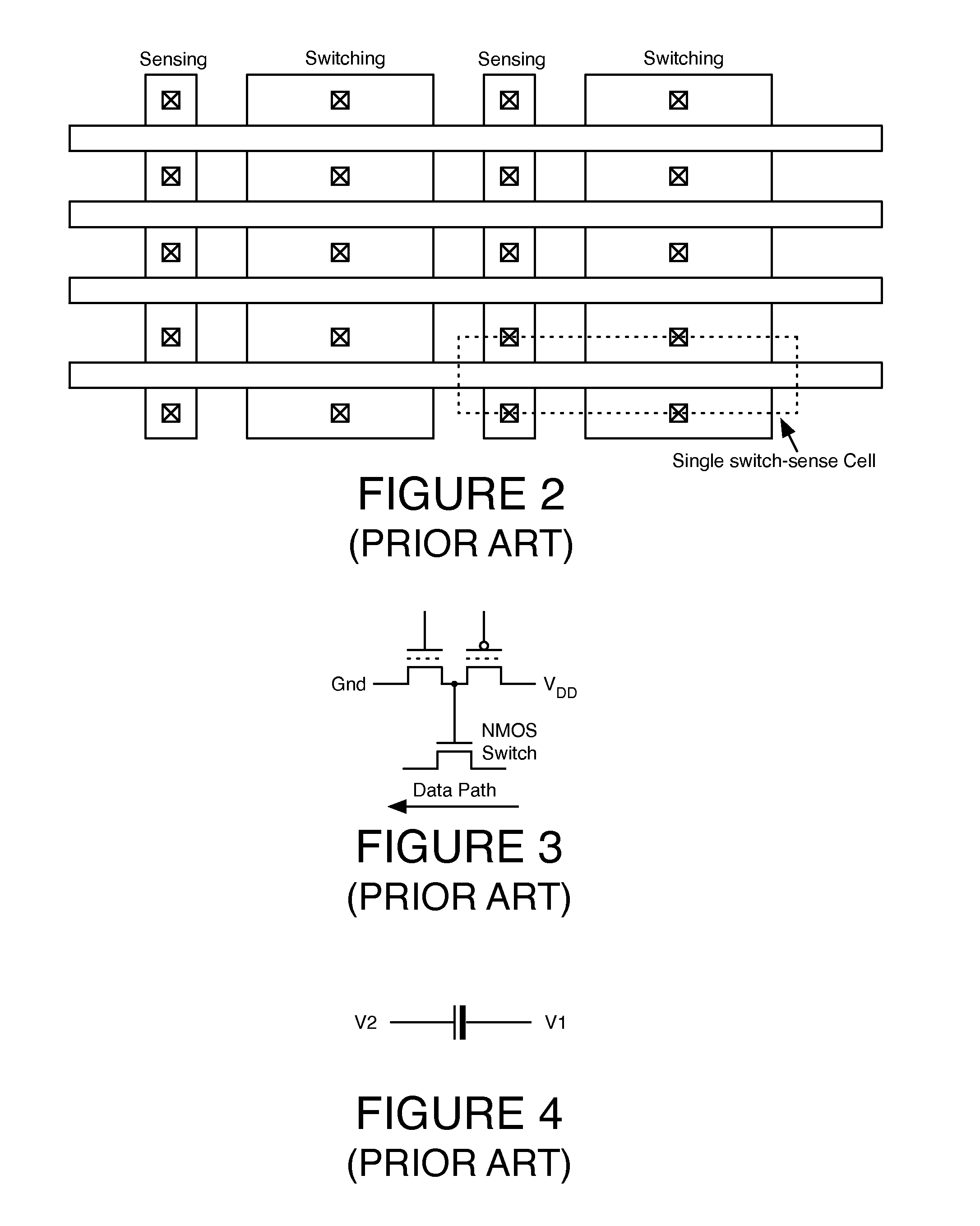Front to back resistive random access memory cells
a random access and memory cell technology, applied in the field of front to back resistive random access memory cells, can solve the problems of large overhead circuitry, limiting the ways in which nvm storage can be applied in user designs, and requiring flash technology to require a large amount of overhead circuitry
- Summary
- Abstract
- Description
- Claims
- Application Information
AI Technical Summary
Problems solved by technology
Method used
Image
Examples
Embodiment Construction
[0064]Persons of ordinary skill in the art will realize that the following description of the present invention is illustrative only and not in any way limiting. Other embodiments of the invention will readily suggest themselves to such skilled persons.
[0065]According to an aspect of the present invention, area-efficient solid electrolyte RRAM device structures are disclosed. The RRAM devices according to the present invention are more manufacturable and are more reliable than prior-art RRAM devices.
[0066]Referring now to FIG. 6, a cross-sectional diagram shows the structure of an illustrative RRAM device 30 according to the present invention presenting one way to reduce the seam problem illustrated in FIG. 5. The RRAM device 30 illustrated in FIG. 6 can be incorporated into a process using tungsten-filled vias.
[0067]RRAM device 30 is formed over a tungsten via 32. Tungsten via 32 is surrounded by a barrier layer 34 and is formed in inter-metal dielectric layer 36. A CMP stop layer ...
PUM
 Login to View More
Login to View More Abstract
Description
Claims
Application Information
 Login to View More
Login to View More - R&D
- Intellectual Property
- Life Sciences
- Materials
- Tech Scout
- Unparalleled Data Quality
- Higher Quality Content
- 60% Fewer Hallucinations
Browse by: Latest US Patents, China's latest patents, Technical Efficacy Thesaurus, Application Domain, Technology Topic, Popular Technical Reports.
© 2025 PatSnap. All rights reserved.Legal|Privacy policy|Modern Slavery Act Transparency Statement|Sitemap|About US| Contact US: help@patsnap.com



